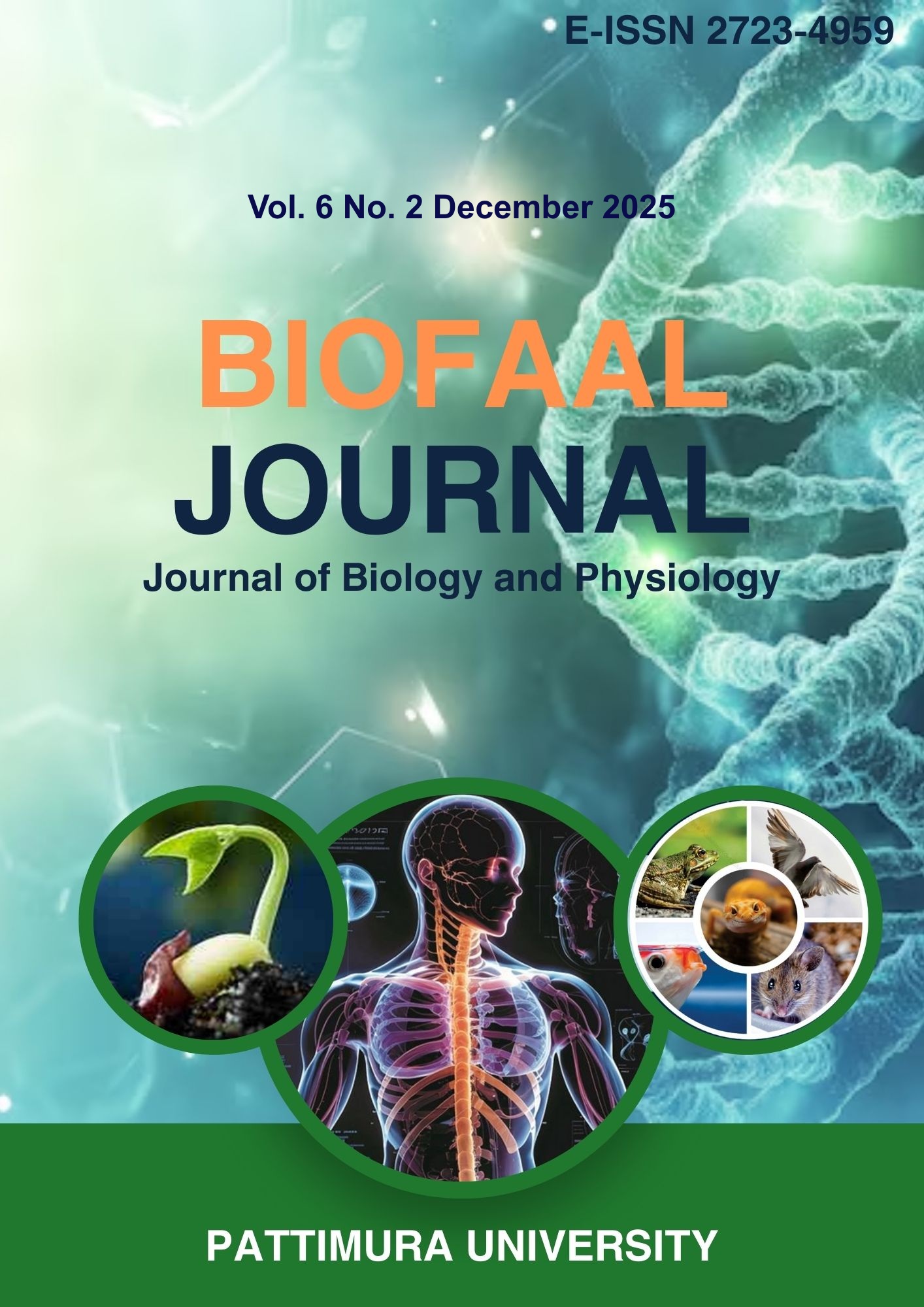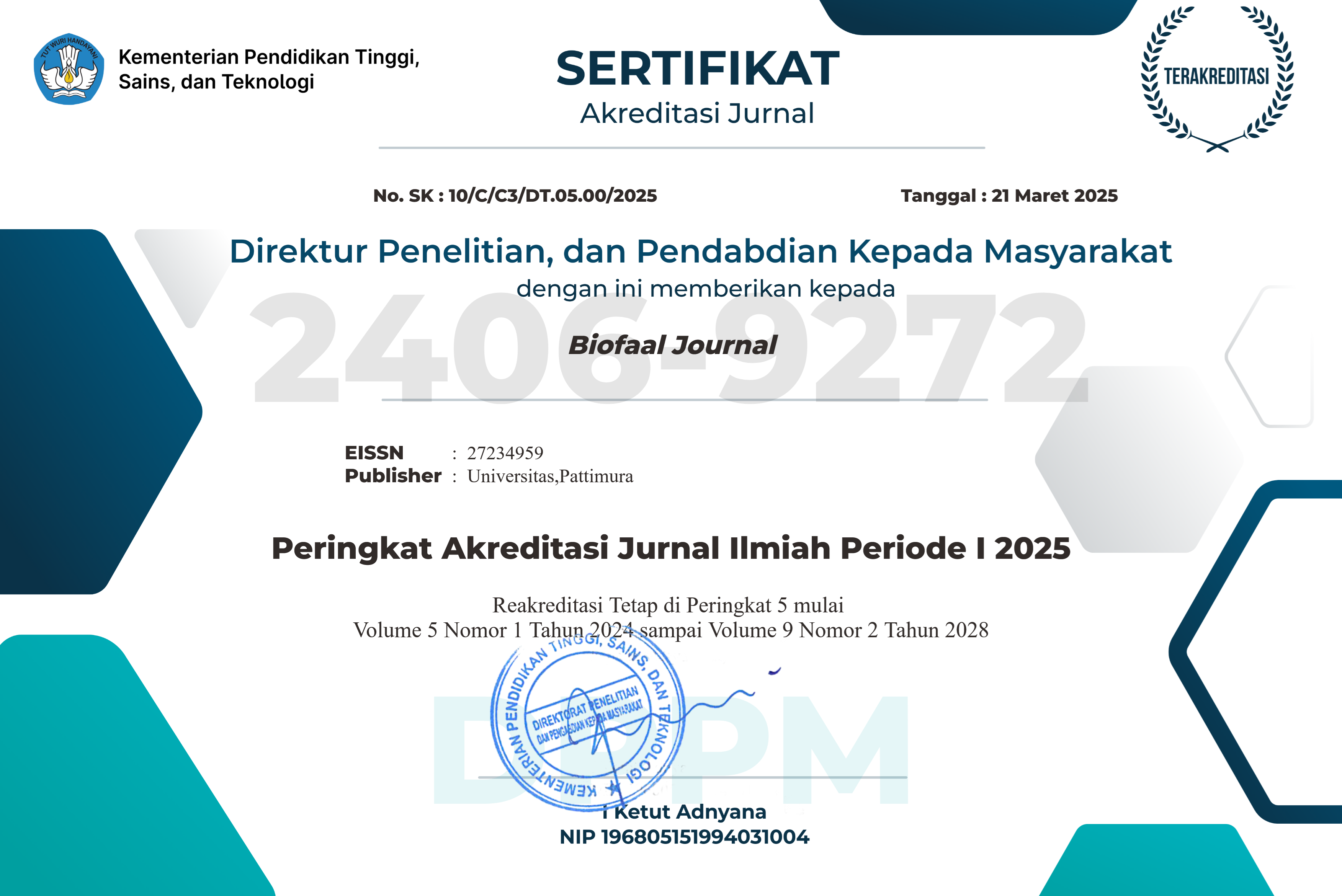The Effect of Clove Leaves (Syzygium aromaticum L) on Controlling the Maize Weevil (Sitophilus zeamis) Infestation in Stored Maize Seeds
Abstract
Storage is a crucial post-harvest handling process; however, during storage, agricultural products are susceptible to various types of deterioration. Post-harvest losses reach approximately 15–20% annually, with about 0.5–2% of those losses caused by the maize weevil (Sitophilus zeamais). Clove (Syzygium aromaticum L.) is an important spice plant, with its most commercially valuable part being the flower buds, which are predominantly used in the cigarette industry (around 80–90%). Clove leaves, which produce a characteristic aroma, contain an essential oil component called eugenol, known for its fungicidal, bactericidal, nematicidal, and insecticidal properties. This study aimed to determine the effectiveness and optimal weight of clove leaves (Syzygium aromaticum L.) in controlling Sitophilus zeamais. The research employed a Completely Randomized Design (CRD) consisting of five treatments and three replications. The treatments included K1 = 0 g (control, without clove leaves); K2 = 10 g clove leaves per 100 g maize; K3 = 15 g clove leaves per 100 g maize; K4 = 20 g clove leaves per 100 g maize; and K5 = 25 g clove leaves per 100 g maize. Observations were conducted once for each replicate, resulting in three data points per treatment. The collected data were analyzed using ANOVA. The results indicated that clove leaves can be used to control maize weevil (Sitophilus zeamais M.) infestations in stored maize. A total clove leaf weight of 70 g resulted in the highest mortality rate, with 9.08 individuals, yet this treatment was still not considered effective as it did not achieve more than 80% mortality of Sitophilus zeamais
Downloads
Copyright (c) 2025 Debby Dijola Moniharapon, Karina Novalin Tetiwar

This work is licensed under a Creative Commons Attribution-NonCommercial-ShareAlike 4.0 International License.
1. Author retain copyright and grant the journal right of first publication with the work simultaneously licensed under a creative commons attribution license that allow others to share the work within an acknowledgement of the work’s authorship and initial publication of this journal.
2. Authors are able to enter into separate, additional contractual arrangementfor the non-exclusive distribution of the journal’s published version of the work (e.g. acknowledgement of its initial publication in this journal).
3. Authors are permitted and encouraged to post their work online(e.g. in institutional repositories or on their websites) prior to and during the submission process, as it can lead to productive exchanges, as well as earlier and greater citation of published works.








